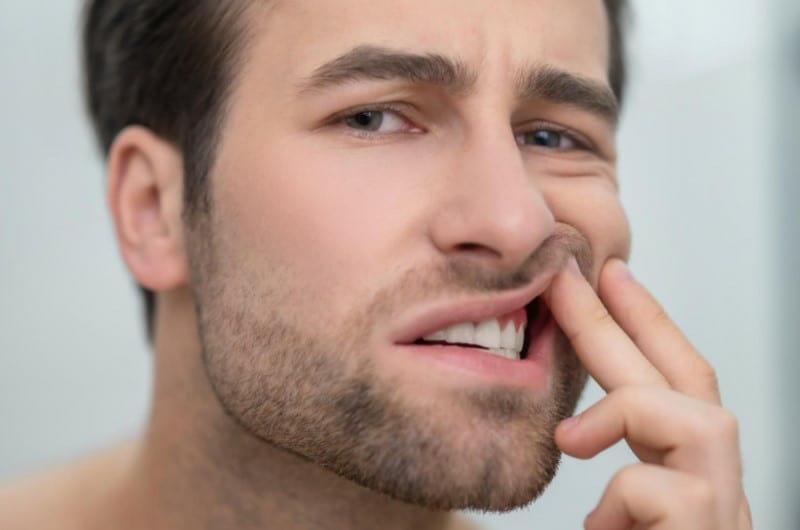Oil-pulling treatment will not help you reverse your tooth decay. But coupled with brushing twice a day, swishing oil in your mouth for twenty minutes can reduce toxins, plaque, and harmful bacteria to some extent while lowering your risk of cavities and gum disease. It doesn’t require any special skills or equipment. Brighter teeth, fresher breath, and improved oral health are some advantages of oil pulling. However, there are some precautions to take, such as stopping if it hurts, brushing your teeth first, using a suitable oil, starting slowly, and staying patient. The practice may not bring big immediate results, but it could prove effective over time. You will get a brighter, cleaner smile and healthier breath. Don’t replace regular brushing and dental hygiene with oil pulling.
Teeth are like the guardians of our mouth, silently watching our speech and smiling. They hold the key to a confident and radiant grin, but when they start to yellow, rot, and crumble, they take away a part of us.
Tooth decay is a problem affecting millions of people worldwide, and it seems to be an unstoppable force. But is that glint of hope oil-pulling?
What is tooth decay?
When tooth enamel is broken and is replaced by a hole in the tooth, it causes cavities.
This can cause pain and sensitivity and oxidize your tooth if you don’t treat it quickly.
Causes of tooth decay
- Plaque and tartar layer formation on teeth
- Cavity formation
- Poor oral hygiene
- High usage of sugar and starch
- Snacking habits
Symptoms of tooth decay
Tooth decay can show mild to severe symptoms. They may include pain or discomfort when biting or chewing and sensitivity to hot or cold temperatures.
It can manifest as bad breath or a foul taste in the mouth and visible tooth holes or discoloration.
If any of these symptoms occur, you should get dental care immediately to stop the decay from worsening.
What is oil pulling?
Oil pulling is a practice that dates back to ancient India and involves swishing oil around in the mouth for a certain period.
It’s been used as a traditional remedy for oral health for centuries, and now, it’s gaining popularity as a natural way to reverse tooth decay.
The principle behind oil pulling is simple: oil attracts and traps harmful bacteria, toxins, and plaque in the mouth, reducing the risk of cavities, gum disease, and other oral problems.
How does oil pulling work to reverse tooth decay?
Oil pulling is believed to help remove toxins from the body and improve oral health.
In particular, oil pulling is thought to help prevent and even reverse tooth decay by reducing the number of bacteria in the mouth.
This, in turn, can help to reduce the amount of plaque and acid that erodes the enamel, leading to cavities.

Benefits of oil pulling
There are many benefits to oil pulling, including the following:
Brightens teeth
The swishing of oil in your mouth acts as a gentle abrasive, scrubbing away surface stains and leaving teeth sparkling.
Freshens breath
Like fresh air, oil pulling can banish bad breath caused by bacteria hiding in your mouth.
The oil attracts and traps the odor-causing germs, leaving you with a clean, refreshing taste that lasts all day.
Supports oral health
By pulling harmful bacteria from your mouth, oil pulling may help reduce the risk of cavities, gum disease, and other oral health problems.
However, you can’t reverse any dental damage already done with oil pulling. You’ll have to see a dentist for that.
Types of oils to use for oil pulling
Coconut, olive, sesame, and sunflower oil can be used for oil pulling. Each oil type has unique benefits, and it is essential to choose the right one for you.
Sesame and coconut oil is considered the ideal choice. Regardless of the type of oil you choose, it is essential always to use high-quality, organic oil, which also works best for you.
Step-by-step guide to oil pulling
Oil pulling is a simple and easy process that can be done at home. Here are the steps to follow for oil pulling:
- Choose an oil with a subtle flavor, such as coconut or sesame oil.
- Measure the oil by scooping a tablespoon and placing it in your mouth.
- Gently swish the oil around your mouth as if you were brushing your teeth with it.
- Time yourself as you’re swishing the oil for 15-20 minutes, being careful not to swallow any.
- Spit the oil into the trash once the time is up. Avoid spitting it into the sink, as it can clog the pipes.
- Rinse your mouth with warm water and brush your teeth as usual.
- Repeat daily by incorporating oil pulling into your daily routine for best results.
- Over time, you’ll experience the benefits of a cleaner, brighter smile and fresher breath.
It is important to note that oil pulling should not replace regular dental cleanings and check-ups but can complement your oral health routine.
Once the damage has already happened, you can’t reverse it by doing oil pulling. So if there’s a cavity, you’ll need to get dental work done.
Potential risks and side effects of oil pulling
Oil pulling has been considered a safe and natural alternative for oral health.
However, like all things, there are potential risks and side effects to consider before incorporating them into your routine.
Some of the most common side effects include:
- Don’t swallow the oil; it can cause nausea.
- There are risks of choking in case you swallow too much oil
- Be careful about your dental work, like dentures or fillings.
- Don’t use the oil you are allergic off
Precautions to take during oil pulling
While oil pulling is generally safe, there are a few precautions that should be taken to ensure the best results:

Don’t swallow
As tempting as it may be to savor the sweet taste of the oil, resist the urge and spit it out thoroughly.
Swallowing oil that has been in contact with your mouth and teeth can cause digestive distress and undo any benefits you may have received from the practice.
Start slow
As with any new routine, it’s best to ease into it. Begin with 5 minutes a day and gradually increase the time as you become more comfortable.
Use the right oil
Not all oils are created equal. Choose a high-quality, organic oil, such as coconut or sesame oil, for the best results.
Brush first
Oil pulling is not a replacement for brushing and flossing. Make sure to clean your teeth first to maximize the benefits of this ancient technique.
Stop if it hurts
Stop the practice immediately if your jaw becomes sore or you experience discomfort.
Everyone’s mouth is different, and some people may not be able to continue for the full recommended time.
Be patient
The benefits of oil pulling may not be immediate. Give it time to work its magic, and don’t get discouraged if you don’t see results immediately.
Like a delicate flower, oil pulling requires patience and nurturing to bloom to its full potential.
Though I come up with many tooth problems, including tooth decay, I haven’t tried this method (I wasn’t aware of it), but with thorough research and research studies, it has been proven as one of the most effective ways to reverse tooth decay.
FAQs
What is oil pulling and how does it work to reverse tooth decay?
Oil pulling is a traditional practice involving swishing oil around the mouth for 20 minutes to reduce the risk of cavities, gum disease, and other oral problems.
How does oil pulling work?
Oil pulling attracts and traps harmful bacteria, toxins, and plaque in the mouth. The oil absorbs these toxic substances as it is swished around the mouth.
How often should I do oil pulling?
For best results, oil pulling should be done once or twice a day, preferably in the morning before brushing your teeth.
What are the benefits of oil pulling?
You will get brighter teeth, fresher breath, and better oral health with oil pulling.
Should I take precautions while doing oil pulling?
When oil pulling, make sure not to swallow the oil, start slow, use the right oil, brush and floss your teeth first, stop if it hurts, and be patient as the benefits may not be immediate.


